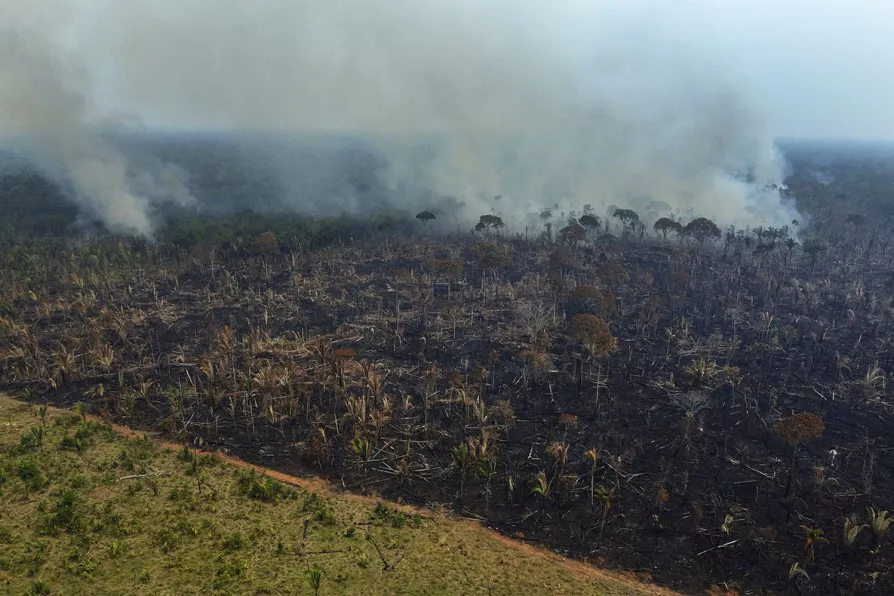
 Smoke rises from a forest fire in the Transamazonica highway region, in the municipality of Labrea, Amazonas state, Brazil, on September 17, 2022
Smoke rises from a forest fire in the Transamazonica highway region, in the municipality of Labrea, Amazonas state, Brazil, on September 17, 2022
THE shrinkage of Brazil’s Amazon rainforest has slowed by nearly half compared to the year before, according to government satellite data published on Wednesday.
This is the largest reduction in deforestation since 2016, when the current method of measurement was introduced.
In the past 12 months, the Amazon rainforest shrank by 1,700 square miles, which represents a nearly 46 per cent decrease compared with the previous period.
Still, much remains to be done to end the destruction, with tree-cutting up by 33 per cent last month from the July 2023 level.
A strike by federal environmental officials contributed to this surge, said Environment Ministry executive secretary Joao Paulo Capobianco at a press conference in Brasilia.
The figures are preliminary and come from the Deter satellite system, managed by the National Institute for Space Research. The most accurate deforestation calculations are usually published in November.
President Luiz Inacio Lula da Silva has pledged to achieve “deforestation zero” by 2030. Tree loss in the Amazon has steeply declined since his far-right predecessor Jair Bolsonaro left office in 2022. Under his government, it hit a 15-year high.
The Amazon rainforest, about two-thirds of which lies within Brazil, remains the world’s largest such region. It absorbs large amounts of carbon dioxide, preventing the climate from warming even faster than it would otherwise, and also holds about 20 per cent of the world’s fresh water and biodiversity that scientists have not yet come close to understanding.
During this same period, deforestation in Brazil’s vast savannah, known as the Cerrado, increased by 9 per cent to reach 2,708 square miles, an area 63 per cent larger than the destruction in the Amazon.
The Cerrado is the world’s most biodiverse savannah, but less of it enjoys protected status than the rainforest to its north. Brazil’s boom in soya beans has largely come from the Cerrado.














